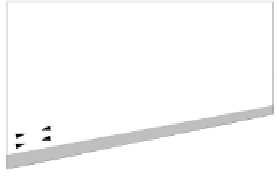Environmental Engineering Reference
In-Depth Information
444
ing up the reservoir and evaluating the discussed tests. This knowledge will also
have a major impact on the question of which model should be chosen.
Geological faults, interactions with neighbouring reservoirs and stratifications
within the reservoir form significant framework conditions and require detailed
modelling. This can only be provided by a local discretisation of these variables
on the basis of numerical simulation. Especially for the evaluation of long-term
behaviour, complicated numerical models are required, which allow for consid-
eration of the existing complex geological circumstances.
To date, the 3D models CFEST (Coupled Flow, Energy and Solute Transport)
and TOUGH (Transport of Unsaturated Groundwater and Heat) are recognised as
the most appropriate models to simulate geothermal-related problems. If there is
only very little knowledge available on the reservoir during the planning phase, or
in the case of a homogenous reservoir with an even parameter distribution, the 2D
model CAGRA (Computer-Aided Geothermal Reservoir Assistant) is also suit-
able /10-8/.
Secondary cycle
Secondary cycle
Productio
n wel
l
Injection well
Production well
GHS
GHS
Injection well
Minimum
distance in the reservoir
Minimum distance in the reservoir
Secondary cycle
Secondary cycle
Production well
Production
GHS
GHS
Injection well
Injection
Fig. 10.4
Possibilities of tapping geothermal fluids (GHS - geothermal heating station)
Design of the downhole system.
Since the geothermal fluid circuit is responsible
for the major share of the investment for a geothermal heating station, investiga-
tions aim at finding a more cost-effective solution than the two-well system
(Fig. 10.4). The aboveground pipeline connection can be kept to a minimum, if
the production and injection well are drilled as divergent boreholes from a single
location.
If several reservoirs are found at one site, a simultaneous exploitation is gener-
ally possible. Such a system layout can minimise the distance between the produc-









































































Search WWH ::

Custom Search